So here we are back in Madagascar! It is rare for us to be going back to, not only the same country, but even the same area and a similar project. It has been heart-warming to reconnect with the friends we made here last year! However, writing a blog is now a challenge as we have already shared so many of our favourite stories and facts about this location and the project. If you missed them check out our 2022 Madagascar Blogs.
But we will give it a try!
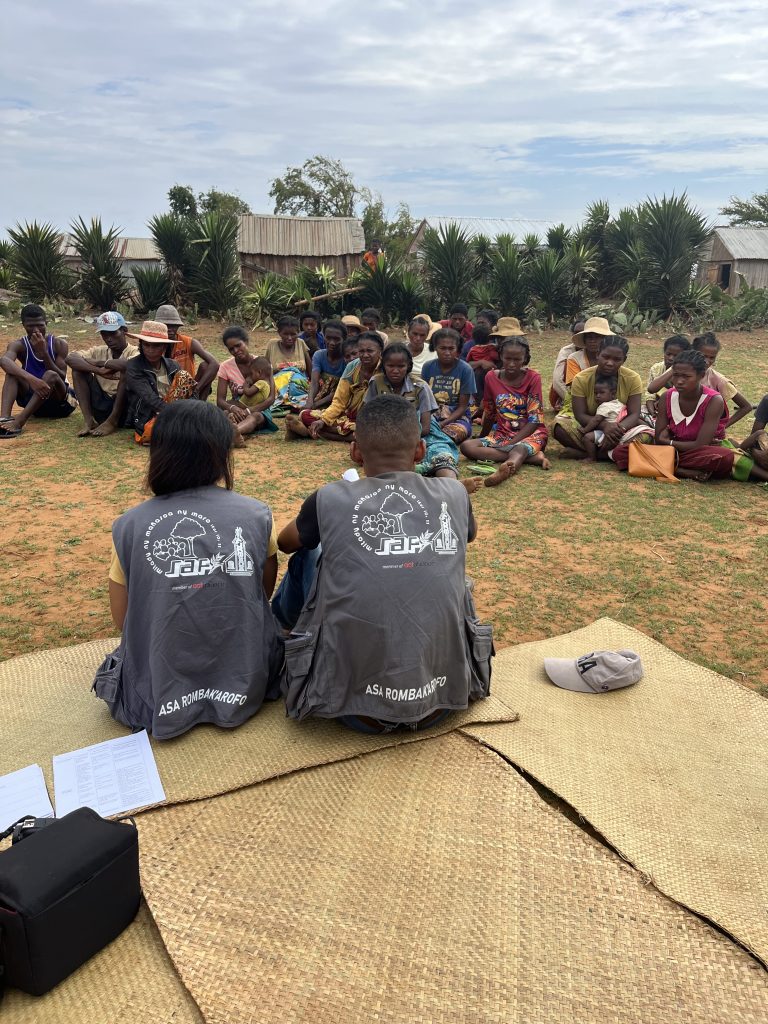
Community Mobilizers at Work
Twelve well-trained and hard-working community mobilizers regularly travel in pairs to their assigned fokontany (villages) to inquire if there are any concerns and to audit the use of the food the families received at the most recent distribution. Their role, however, is much more important and demanding than this! It also includes doing community wide training in each fokontany about a number of issues. These include gender-based violence, a complaint mechanism, fraud and corruption, beneficiary rights and entitlement, and a new one this year: the importance of tree planting!
In the Ambovombe and surrounding districts, there has been rampant deforestation that is contributing to climate change and its negative impact on food security. Studies have identified charcoal production as one of the main drivers of deforestation. The traditional method of making charcoal in this area is to cut down and burn trees which are an increasingly rare commodity. The trunk is put in a dug-out earth pit, lit and covered with earth. The combustion of part of the wood produces enough heat to carbonize the remainder.
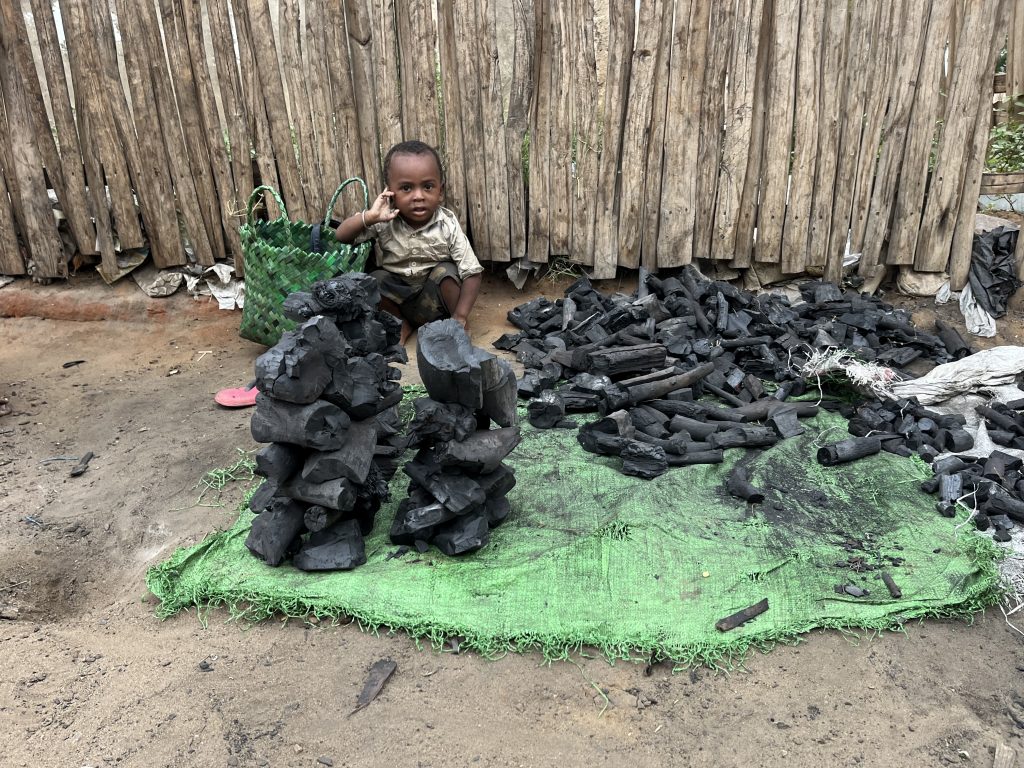
Selling charcoal along the roadside
Unfortunately, income from selling charcoal serves as an important seasonal income gap-filler and as a safety-net for households that face economic challenges.
One subject the community mobilizers highlight is the distressing consequence of deforestation. The loss of trees and underbrush increases flooding, soil erosion, higher temperatures, and desertification. The government recommends the inclusion of resilience-building and rehabilitation programs to strengthen interventions. As such, in addition to the provision of food, this project is integrating community work with reforestation initiatives by providing 6,000 tree seedlings to the 2,000 participant households to plant on their farms. Each farmer will receive one Acacia, one Varo and either a Papaya or a Moringa tree.
The Acacia tree is pod bearing with seeds that can be eaten, is fast growing, provides incredible shade and the dead branches serve as firewood.
The Varo tree is good for shade, provides a wind screen, is drought resistant and when mature, is good to use for construction of homes and/or furniture.
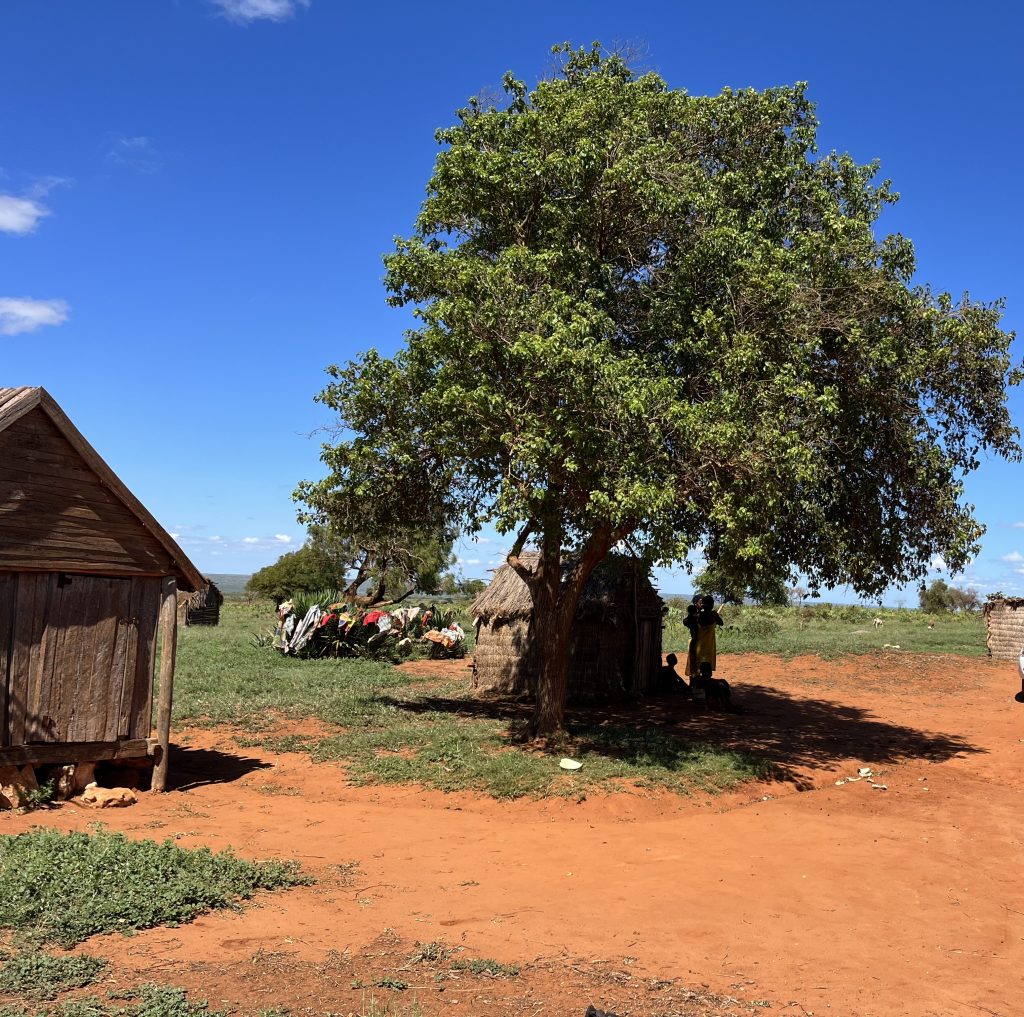
7 year old Varo tree
The Papaya tree produces fruit which can be eaten or sold. Papayas taste sweet and the juice is delicious. We can attest to this! Small green papayas can be made into a salad. These tree seedlings will be distributed to more southern fokontany where they will thrive. More to the north, a Moringa, a fast-growing, drought-resistant tree will be distributed. It has many good qualities. One can eat the leaves of this tree raw or cook them. The moringa leaves have amazing health benefits. That is not all! The seed in the pods produced can be used to purify water!
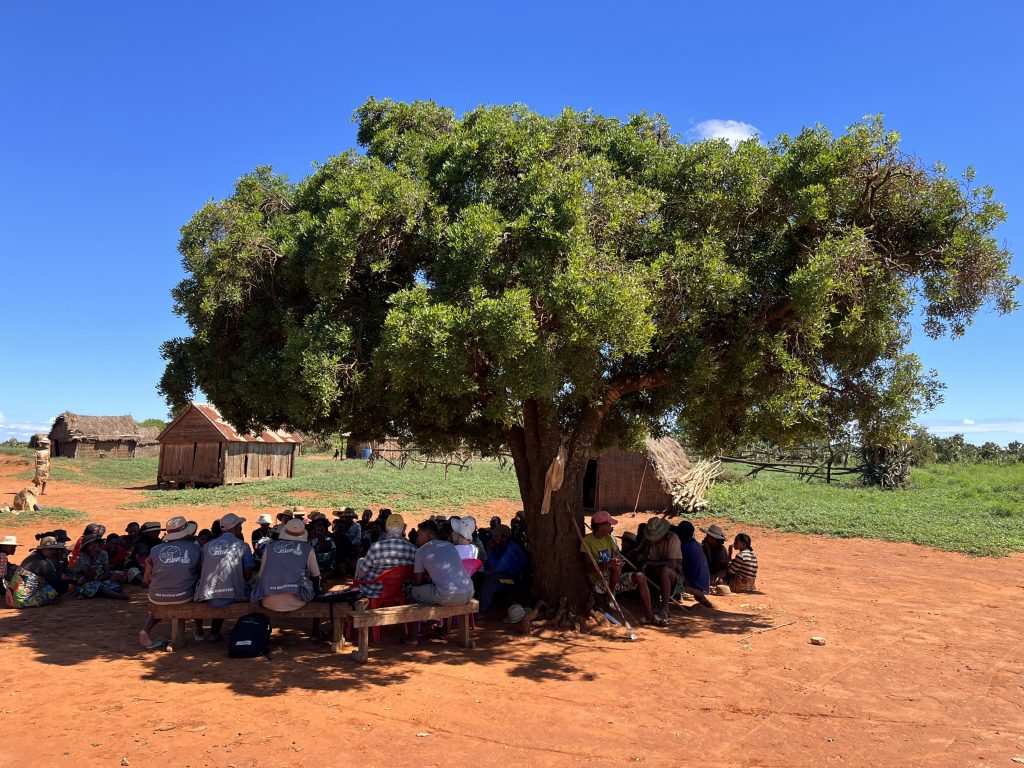
Classroom under the tree
We listened (with great help from our translator) to the training given to two different fokontany by the community mobilizers. The information is taught thoroughly with questions being asked back and forth and some enthusiastic discussion to be sure there is good understanding. What better classroom for inspiration than under a large shade tree!
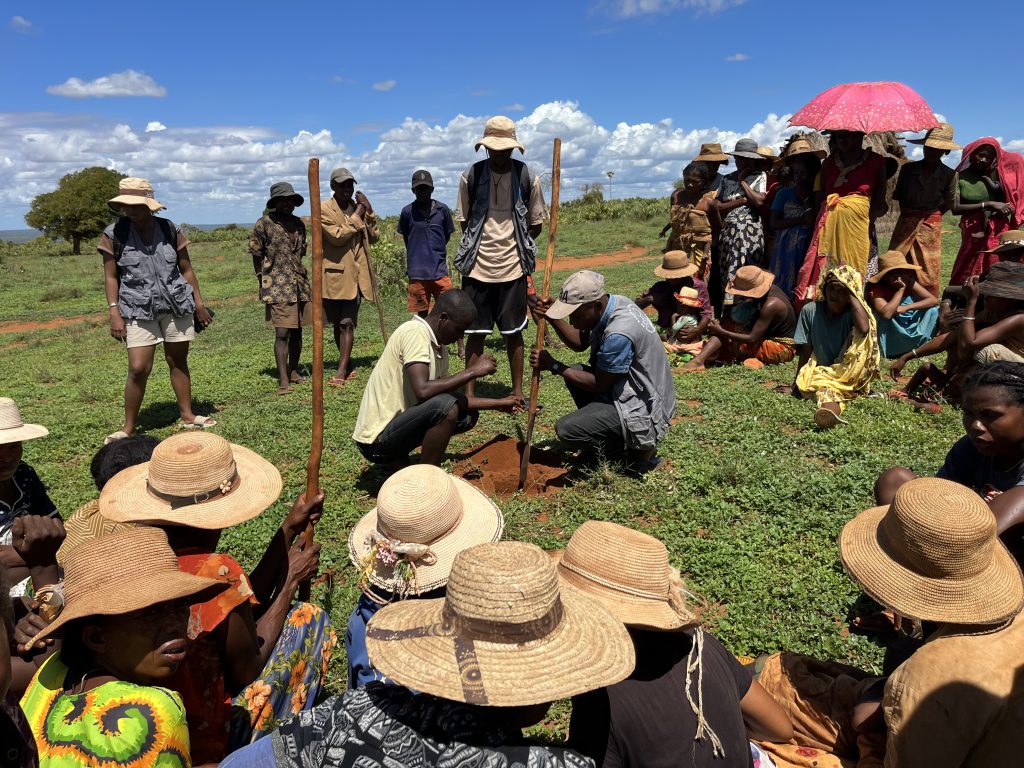
Demonstration
After learning about the importance of tree planting and the characteristics of the various trees to be distributed, there was a gathering at a demonstration plot. Detailed planting information was given: do not forget to take the plastic off the roots before placing the tree, protect the young tree from animals by building a fence of cacti around it and carefully follow a timetable for watering. The exact dimensions of the hole to dig for each type of tree was shared. Measure by stretching out your hand. Did you know the distance from the tip of your thumb to the tip of your baby finger is 15cm? Now it is time to dig the hole! We were surprised how solid that earth was! We thought by its appearance that it would be much softer!
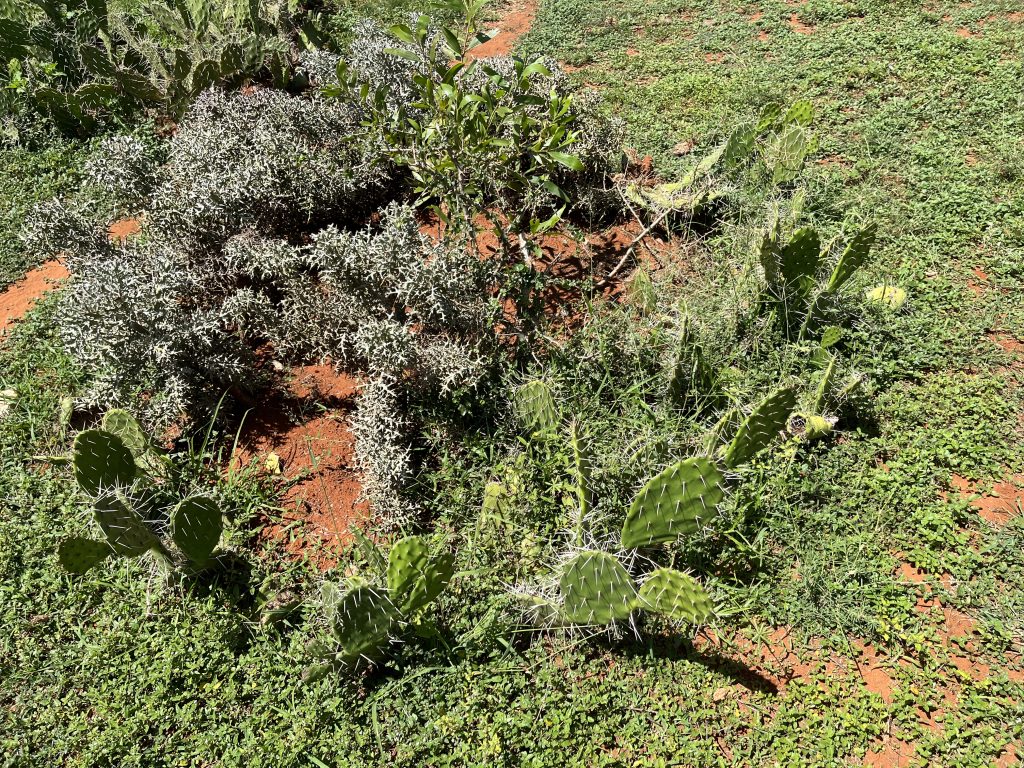
Cacti protection
We look forward to seeing the tree distribution on February 2nd and 3rd, just before we leave. We anticipate the seedlings will be received with much enthusiasm!
Thank you for the many supportive comments we have received from you and the promises of prayer for us and this vulnerable community. You encourage us!
Harry and Annie
P.S. You may also be interested in reading this article about the project.
https://www.christiancourier.ca/hunger-response-in-madagascar/


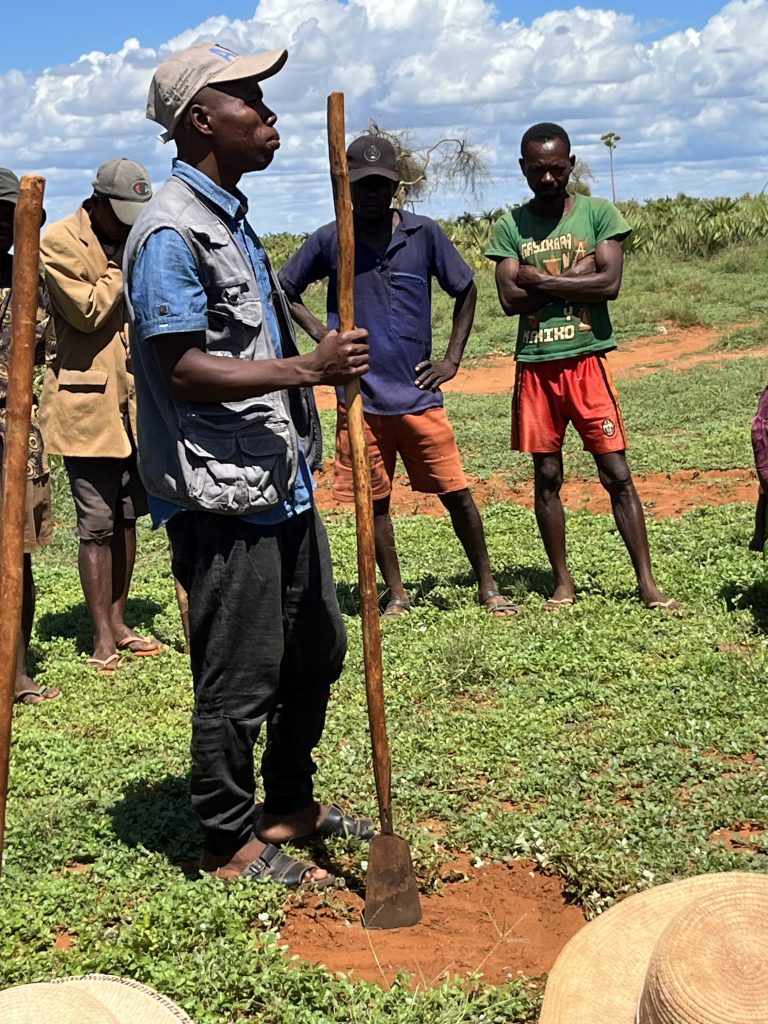

Harry and Annie, Thanks for sharing this information! The many benefits of the different trees are amazing. Planting trees is a great addition to what is distributed.
Thanks for all of your work!
What a neat project! To plant trees. Hopefully people who did not attend the gathering are willing to participate as well in this much needed effort.
Will pray for excitement and enthusiasm and also for your ability to word the document you are working on in such a way that the CFGB approved the necessary food to these hungry people.
You began by saying that it might be hard to find new things to tell us but indeed, you are great communicators and I learned a lot about the different trees and their benefits and why planting trees is so important. Much prayer is being raised for you both, in your work, and for your good health and also for those mobilizers and the work they are doing for their own villages and people. Harry and Annie, you have both been blessed and now are now are being a blessing in so many special ways
interesting to hear about the planting project. It is not something we normally think about. Also I did not realize that the trees being planted are all 100% useful to the community.
I look forward to hearing more.
Thank you Harry and Annie
We will continue to pray for you
Planting trees, What a fabulous strategy to fight against the drought situation. I thought the most amazing by-product was the moringa tree seeds, which can be used to purify water.
Thankyou Harry and Annie for your willingness to work among these people. I pray your analysis and report, which gives these folks immediate food relief. Also your encourage-ment encouraging to plant trees,
Thankyou, for your blog.
God bless you with stamina, wisdom, Perseverence as you work here.
I like how the trees were chosen for the many things they could offer. Hopefully it will help the food and water shortage. Thanks for all your work on this project.
Thks for sharing this information of the importance of planting these trees. Your work is much needed and appreciated. Thks for all you do with World Renew. Blessings and prayer for God’s continuing care and protection while you continue to do His work .
Good to hear from you, sounds like you are doing well! Love learning how these trees will be beneficial to the community. Praying for many blessings during your time in Madagascar and a safe trip home.
Thank you for sharing all that information! We pray that all may go well with this project.
It seems to be a very wise long term plan.
Blessing to you in all the work you are doing.
Safe travels!
Well, that is a hopeful blog report! What a well-researched ( complete with photographs) and informative description of the three trees! Has there been some rain this year? So glad you are able to be part of this along with the rest of the relief you are working on. Showers of blessings, Roelie
Dear Harry and Annie, thank for you the information on the different trees and their benefits. Bless you for being there to help with the project and we pray for good health and safety and journey mercy as you return home.
Thanks to you, Harry and Annie, for sharing a part of your work in Madagascar. May God bless your time there and bless the planting of trees. Each tree so useful and beneficial to all! God’s creation continues to bring pleasant surprises. Thanks be to God. We’ll continue to keep you in our prayers.
look forward to hearing about whats happening in ambovombe. thanks for this update.
Wow, your words and work are so encouraging and interesting informative and beneficial to the villages in Madagascar! May what you witness in turn encourage and inspire you. May you continue to know the Lord’s guidance, joy and strength.
Dear Harry and Annie,
Thank you for this update. It’s so good to see you continuing to do this work! You are truly a gift! Reading your blog is informative and eye opening. I’m glad to have a peek into your experience. I pray that you find joy in your work and also for good health and protection.
Harry and Annie! What a wonderful planting project and your description and pictures are terrific. The speed of growth of the trees is quite awesome. Your working trip will leave a legacy, and I loved hearing about connecting with friends you met last year. I’m sure it means a lot to these people to have you back again. Thinking of you every day and sending love your way.
So good to read your fascinating update, Harry & Annie. Continued blessings on all the wonderful work you are doing! Prayers for health and protection continue.